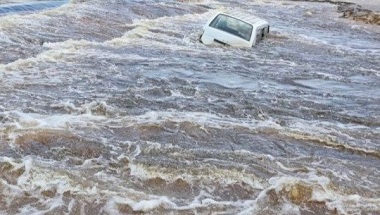On behalf of the African Development Bank Group , I extend our deepest sympathies to the communities impacted by Mediterranean storm Daniel in Libya. This storm has resulted in a significant loss of life and widespread devastation, most notably in the worst hit city of Derna.
Libya is a nation already facing many challenges. Sadly, the escalating number of deaths, reportedly now close to 5,300, and 10,000 missing persons—due to the collapse of upstream dams—emphasises the need for urgent reconstruction to protect lives and secure livelihoods.
It is important that as an international development community, we come together to support Libya in expediting the recovery and reconstruction of the affected regions. The African Development Bank Group will do everything in its capacity to support the communities in Libya that are grappling with this tragedy.
“We offer our condolences to the families mourning their loved ones. May God give them the fortitude they need at this difficult time”.
In the wake of the storm and floods that devastated this Mediterranean coastal city and other Libyan cities, local authorities report that at least 5,100 fatalities have been reported in Derna.
According to experts, one-fourth of Derna city is destroyed. According to locals, at least one dam failed, unleashing a torrent of water that completely flooded entire neighbourhoods where the river joins the ocean.
The bodies of loved ones, some of whom were washed out to sea, are being sought for by the locals, many of whom lost their houses.
Several corpses are seen lined up in a hospital’s yard and bodies in white shrouds are seen buried in a mass grave in local video footage. According to the Associated Press, authorities anticipate the 5,100 fatality toll to grow.
The fact that Libya is split between competing regimes and the nation is already torn by more than a decade of violence has hindered rescue operations. Fighting within factions has resulted in severe poverty and infrastructural deterioration.
The dams had not been repaired for years, according to experts. This storm, according to meteorologists, was exceptionally strong and consistent with a trend of increased extreme weather brought on by human-induced climate change.














